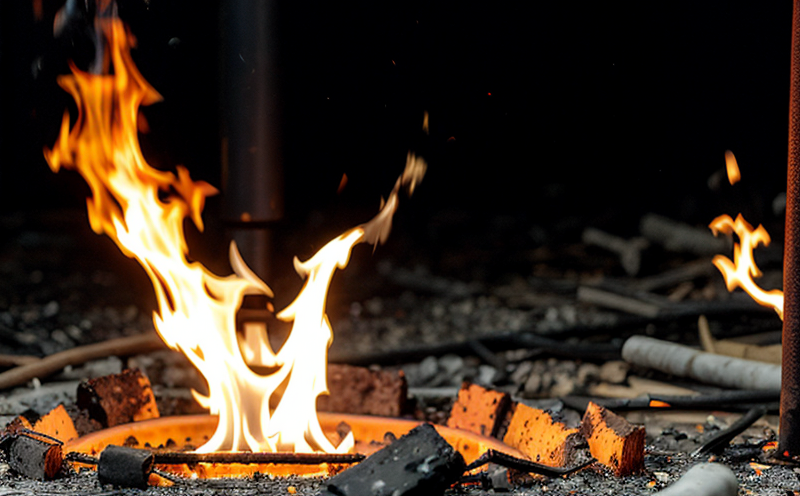GB 6675 Flame Spread and Ignition Test
The GB 6675 standard is a crucial guideline for ensuring toy safety, particularly focusing on the flammability of materials used in toys. This test evaluates how quickly fire spreads across surfaces made from or coated with combustible material, as well as whether the material ignites easily when exposed to flame. The objective of this testing is to identify potential hazards that could cause fires and burns, especially for children's toys.
The GB 6675 test method involves exposing a sample to a small flame source (such as a Bunsen burner) under controlled conditions. After the flame has been applied for a specified period, the tester measures the distance the flame spreads along the surface and the time it takes to extinguish spontaneously. The results are categorized into different classes based on these measurements.
This testing is particularly important given that many toys contain synthetic materials such as plastics, fabrics, or foams which can be flammable if not properly treated. Compliance with GB 6675 helps manufacturers and importers ensure their products meet the stringent safety requirements set by the Chinese government for toy manufacturing.
The test is designed to mimic real-world scenarios where a child might come into contact with an open flame, such as near candles or matches. By conducting this test, companies can verify that their toys are safe and do not pose a risk of fire or burn hazards. This testing procedure ensures that toys meet the highest safety standards and helps protect children from potential injuries.
The GB 6675 test is also essential for ensuring compliance with international toy safety regulations. It plays a vital role in the certification process, enabling manufacturers to export their products legally to countries like China and other regions where this standard applies.
Compliance with these standards not only enhances product safety but can also improve brand reputation and customer trust. By adhering to such stringent testing protocols, companies demonstrate their commitment to quality and consumer protection.
In conclusion, the GB 6675 Flame Spread and Ignition Test is a critical procedure for ensuring toy safety by evaluating flammability properties of materials used in toys. This test helps identify potential fire hazards and ensures that products meet essential safety requirements set forth by regulatory bodies.
Applied Standards
- GB 6675-2014: Safety of Toys: This standard covers various aspects of toy safety, including flammability testing.
- ASTM F963-17: Standard Consumer Safety Specification for Toy Safety: While primarily focused on overall toy safety, this standard also includes flammability requirements.
The GB 6675 Flame Spread and Ignition Test aligns with these standards by ensuring that toys do not pose a fire hazard due to their materials. This alignment is crucial for manufacturers exporting products to China or adhering to international toy safety regulations.
Competitive Advantage and Market Impact
Compliance with the GB 6675 Flame Spread and Ignition Test provides significant competitive advantages in the toy industry. By ensuring that their products meet or exceed safety standards, manufacturers can:
- Earn consumer trust and loyalty.
- Avoid costly recalls and negative publicity associated with unsafe toys.
- Expand market reach by gaining access to larger markets like China.
- Demonstrate a commitment to quality and safety, which can enhance brand reputation.
Moreover, regular testing helps companies stay ahead of regulatory changes and emerging trends in toy safety. It also allows them to continuously improve their product designs and manufacturing processes, ensuring ongoing compliance with evolving standards.
Use Cases and Application Examples
- Plastic Toys: Testing for flammability is essential for toys made from or coated with plastic. This ensures that the toy does not catch fire easily, especially if it comes into contact with open flames.
- Fabric Toys: Fabric toys are particularly vulnerable to fire hazards due to their porous nature. The test helps ensure that these toys meet safety standards and do not ignite under adverse conditions.
- Soft Toys: Soft toys often contain synthetic materials such as foams or fabrics which can be flammable. This testing ensures the safety of children who may play with soft toys close to a heat source.





